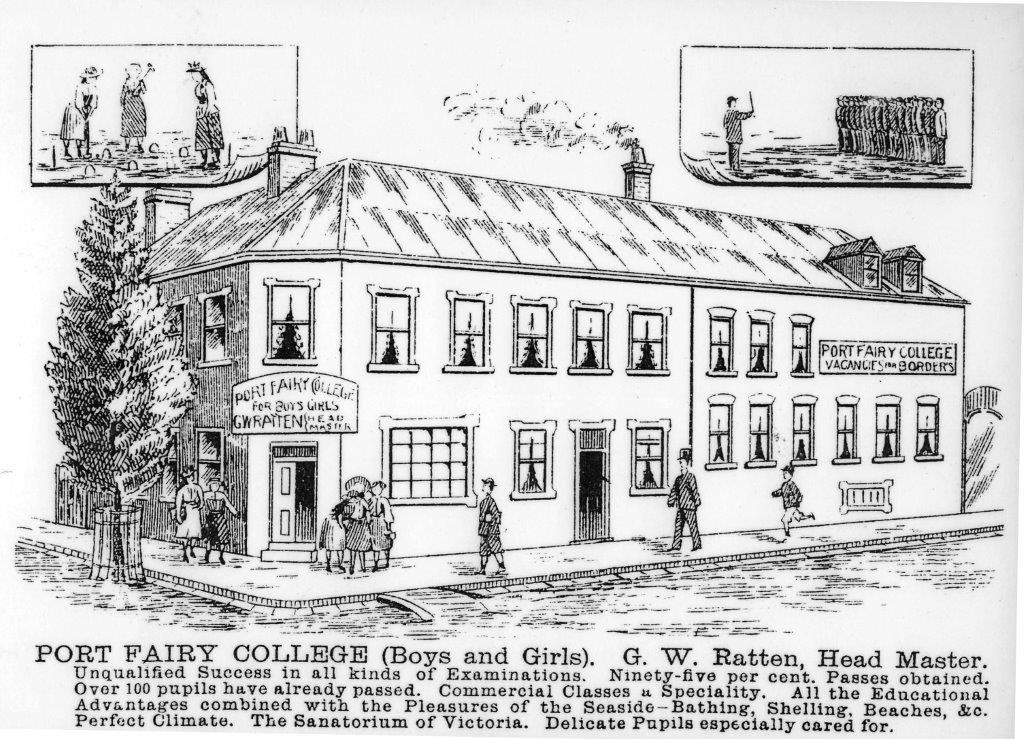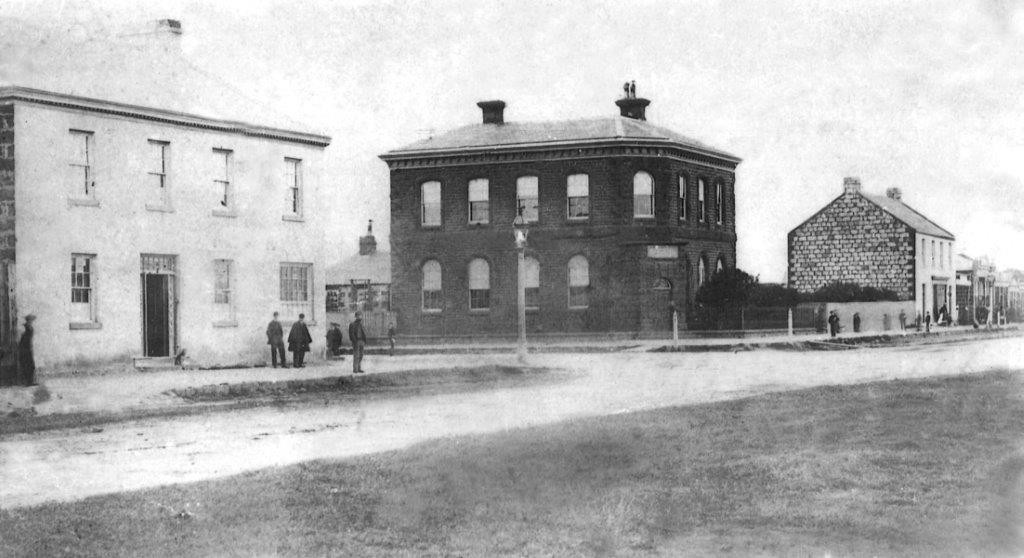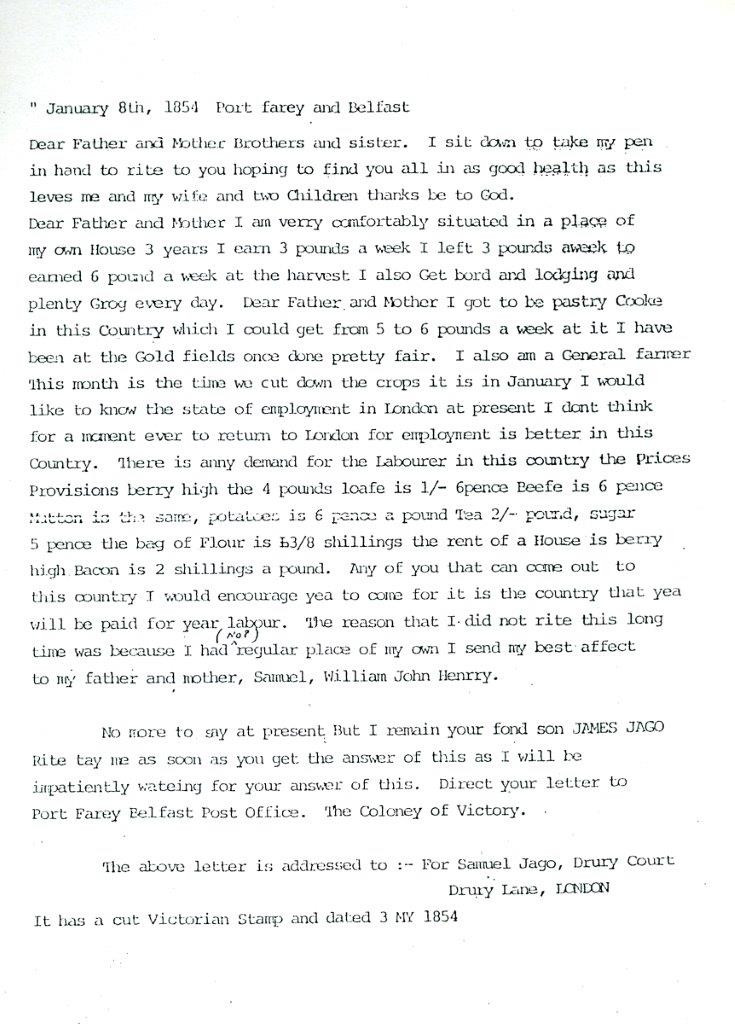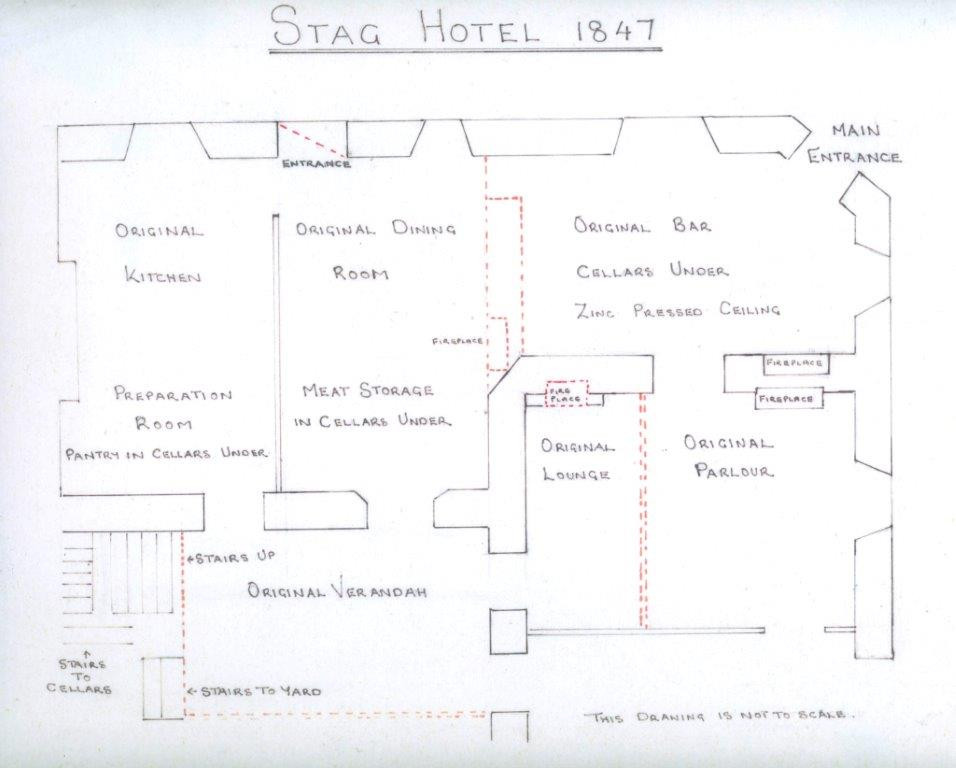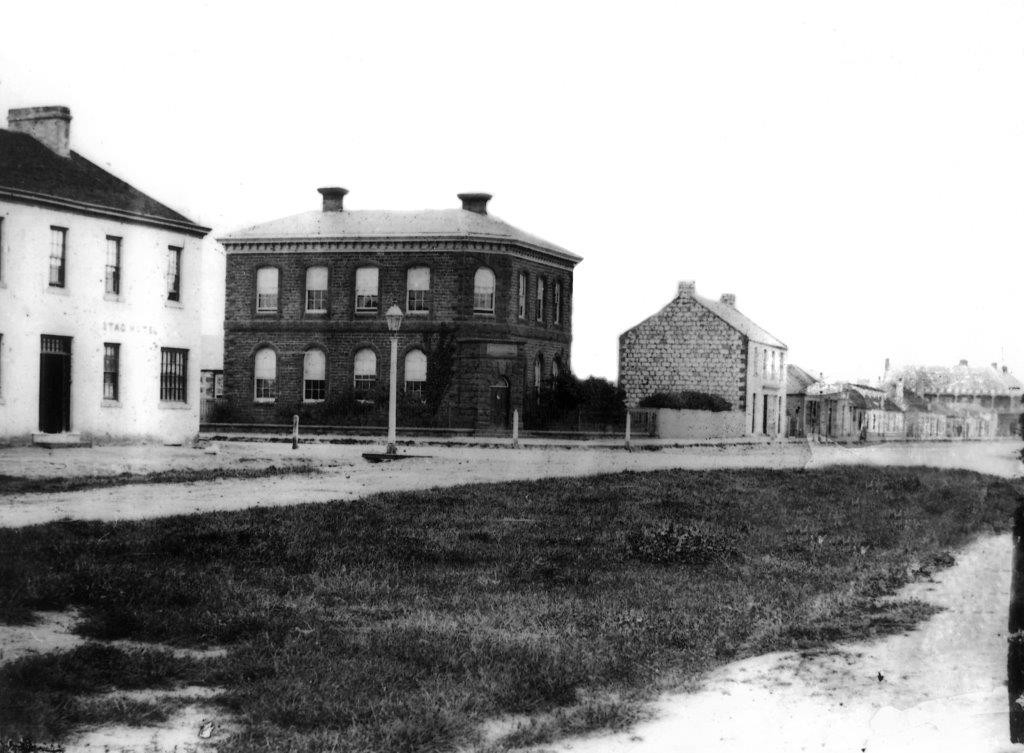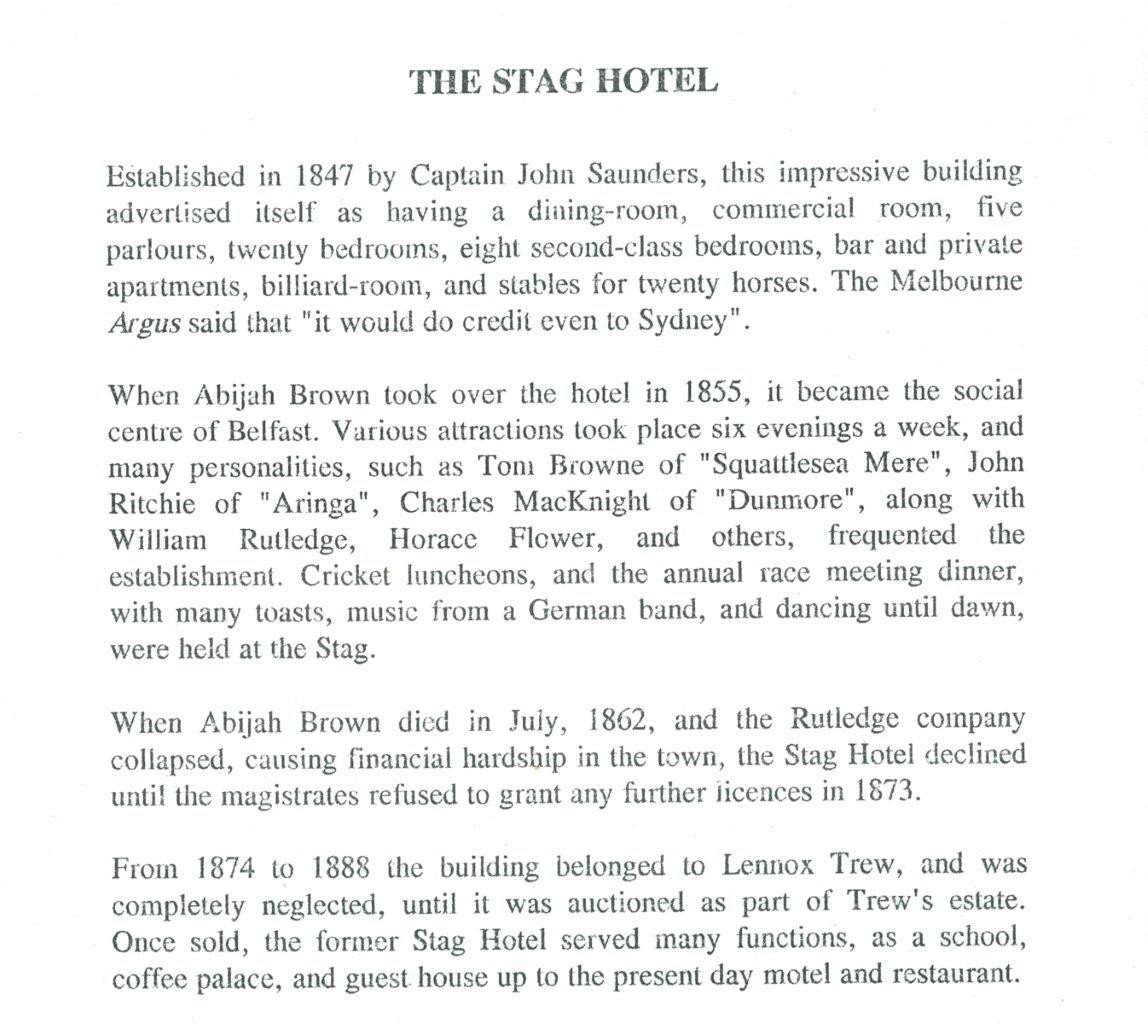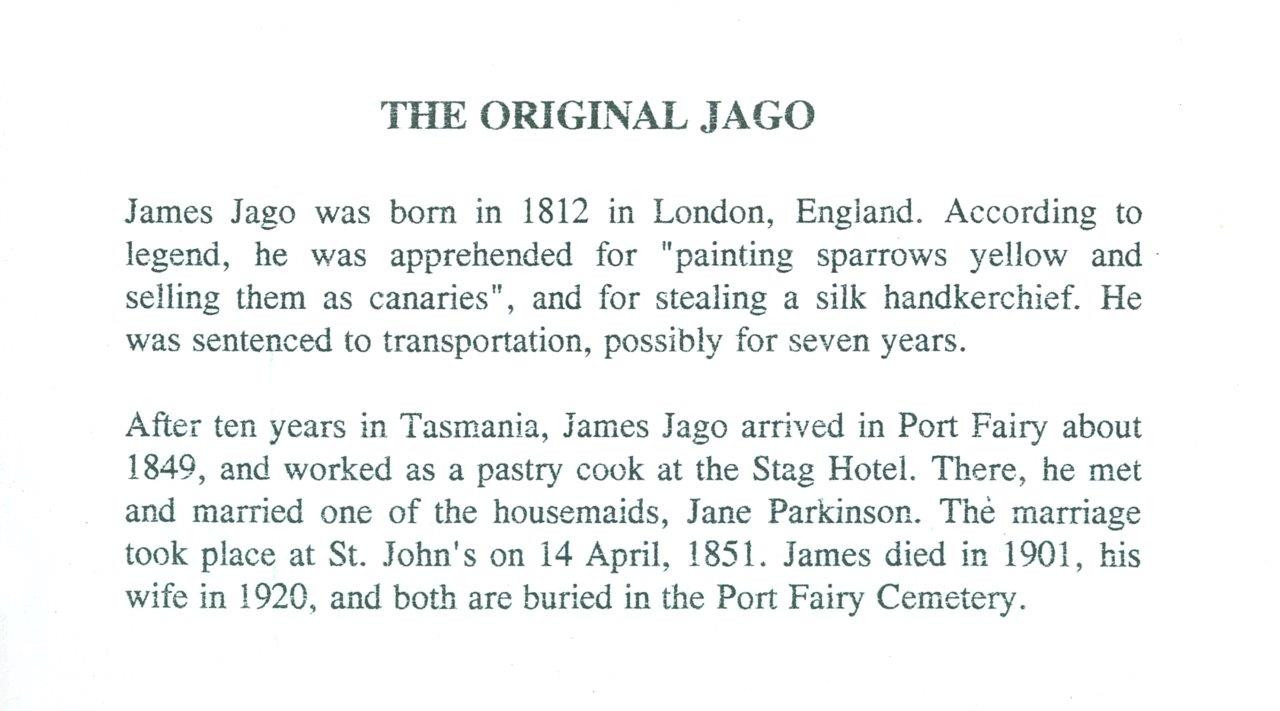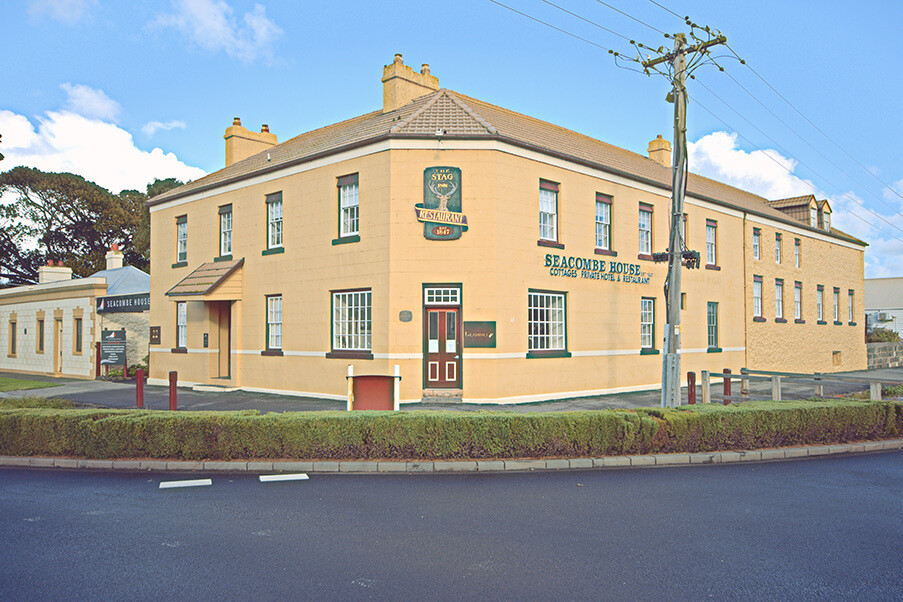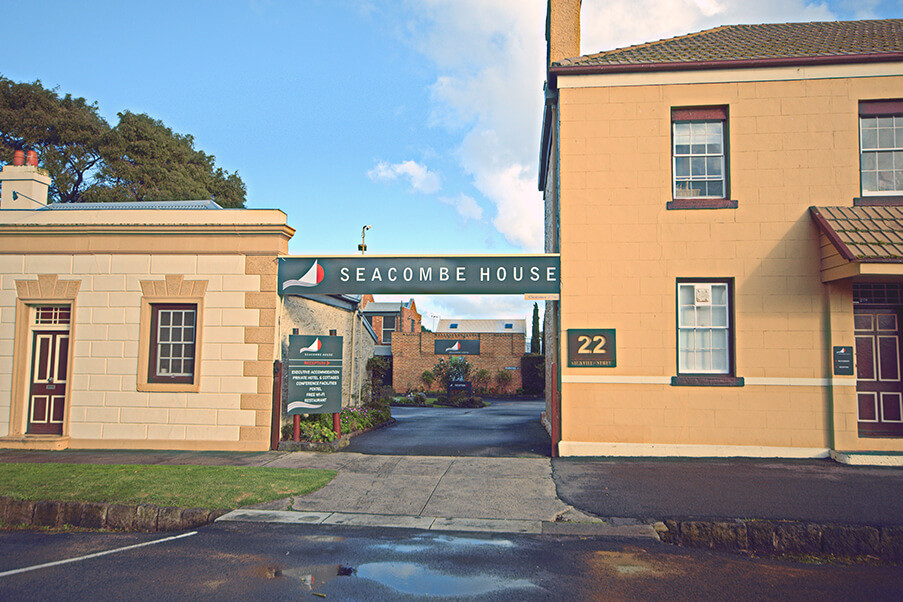A rollicking good tale
Imagine traveling along one of the bush tracks leading to Port Fairy in the middle of last century. The night is pitch-black. Then you catch a glimpse of a light in the distance, perhaps two or three. You know that you are in sight of a wayside inn, with a bed, a hot meal and a glass of grog, for the inns were compelled to keep lamps burning outside their premises.
The Stag Inn was built in 1847 by Captain John Sanders. His schooner, the Dusty Miller had run aground on the rocks off Rabbit Island in 1842. He decided to stay in the small but fast-growing town of bark-roofed slab huts.Port Fairy was a town of whalers and pastoralists.
The Stag Inn was a remarkable building for its time. The Argus commented that ‘it would do credit even to Sydney’. It boasted a dining room, a commercial room, five parlours, twenty bedrooms, eight second-class bedrooms, a bar and billiard room as well as private apartments. Where the motel now stands were stables for twenty horses, which were used by wealthy squatters. The 6000 gallon underground water tank still supplies fresh drinking water.
The ceiling of the Stag Restaurant is made up of the original pressed zinc and boards. In the corner of the ceiling a square piece of wood has replaced the ladder that originally connected the dining room with the upstairs rooms.
The second licensee of the Stag Inn was John Mason, an architect and builder of the Rosebrook Bridge. He was one of the few to put on record a description of the Mahogany Ship, which he came across on a ride to Warrnambool in 1846, ten years after the ship was discovered.
The third licensee was the curiously named Aquila Duck, President of the Rifle Club and a good shot. After competitions on South Beach, the club would retire to the Stag for ‘considerable conviviality’.
William Rutledge, entrepreneur, member of parliament and ‘King of Port Fairy’, was a leading developer of the town from the 1840s. He regularly gave parties at the Stag until his commercial empire became insolvent in the sixties.
In 1855 Abijah J. Brown became the fourth licensee. He was nicknamed ‘Clockey’ because of his big, gold time-piece which he wore on an impressive chain across a fancy waistcoat. He wished to ‘astonish the natives’ with ‘Unprecedented Attractions’, such as the Ethiopian Serenaders and ‘those popular artistes, Mr and Mrs Osborne, assisted by their wonderful dog, Jonathon’, who offered ‘Novel, Humorous Musical, Terpsichorian and Dramatic Entertainment’. He entertained the ‘knights of the saddle’ and their ladies with fine food and wine, balls and quadrille parties, much to the chagrin of the ordinary folk who frequented the bar.
One of the most frequent and celebrated visitors to the Stag Inn was the squatter T.A. Browne, better known as Rolf Boldrewood, author of fourteen novels, including Robbery Under Arms (1888). He acknowledged the Stag Inn as the social centre of the district.
In the 1860s you could enjoy a counter-lunch with a glass of ale or spirits for sixpence. The little bar parlour was a favoured meeting place for local businessmen on Saturday nights. One night, however, the manager of the Banner newspaper, Thomas McCracken, became involved in a scuffle with Dr Scott. Both men fell over the parapet into the downstairs kitchen. McCracken died from a fractured skull, but it was rumoured that you might stumble across his ghost in the old hotel.
One notorious licensee was John Payne (1867), who had problems with a sick wife, an attractive housemaid and a jealous housekeeper. On the death of his wife, Payne proposed to the housemaid. The housekeeper informed the Coroner that her employer had put white powder into a glass of hot wine for Mrs Payne and that some of her arsenic powder was missing. Payne lost his licence but won the housemaid before taking flight.
In 1853 the Bank of Australasia was built a few paces south of the Stag in Sackville Street. Next door was the old shire office. These little stone buildings have been converted into cottages and form part of the Seacombe House complex. They provide luxury accommodation with spas and open fire-places.
Over the years the Stag Inn has served several functions: assembly room for the borough; temperance boarding house; boarding school and guest house. Its outward appearance is almost unchanged from the time that Captain Sanders proudly declared the building open. Its civilising influence was extremely important in those early days of settlement in the Western District. The old hotel survives as a memorial to those early pioneers. Both hotel and cottages are among the fifty buildings in Port Fairy that are classified by the National Trust. The original ballroom has been restored to capture some of the flavour of well-to-do social life in the provinces in the Victorian era. Now known as the Boldrewood Room, it provides conference facilities in an attractive period setting.
You will notice that some ground floor rooms have names. The Casino and Eumeralla were ships that plied the coast, carrying potatoes and crayfish to Melbourne and returning manufactured goods such as tar. Wishart was the sealer who gave the port its name, possibly as early as 1810. His cutter was called the Fairy. Captain Armstrong’s Pelican was also a regular visitor to Port Fairy Bay in those early years.

